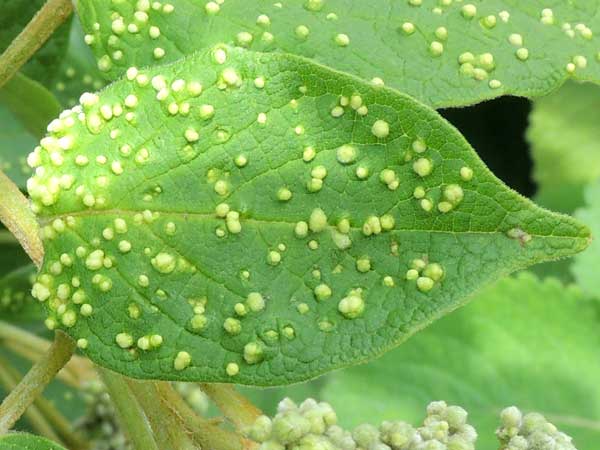Cordia Leaf Gall Mite

Leaf of a Cordia with numerous leaf galls likely caused by gall mites. Iten, Kenya. July 2014.
From Wikipedia:
Eriophyidae is a family of more than 200 genera of mites, which
live as plant parasites, commonly causing galls or other damage
to the plant tissues and hence known as gall mites. About 3,600
species have been described, but this is probably less than 10%
of the actual number existing in this poorly researched family.
They are tiny, microscopic mites and are yellow to pinkish
white to purplish in color. The mites are worm like, and have
only two pairs of legs. Their primary method of population
spread is by wind. They affect a wide range of plants, and
several are major pest species causing substantial economic
damage to crops. Some species, however, are used as biological
agents to control weeds and invasive plant species.
Even through a 10x magnifier, the minute arthropods responsible for these plant galls are difficult to see. Under a dissecting scope the galls can be opened carefully to reveal the mites inside. I have found this Clerodendron in several areas of the Rift Valley Highlands, and in every case the mite-produced galls are present! It seems to be a tight relationship between the parasitic arthropod and the plant. I suspect that the plant benefits in some way. Perhaps the leaves are more distasteful to macro-herbivores?